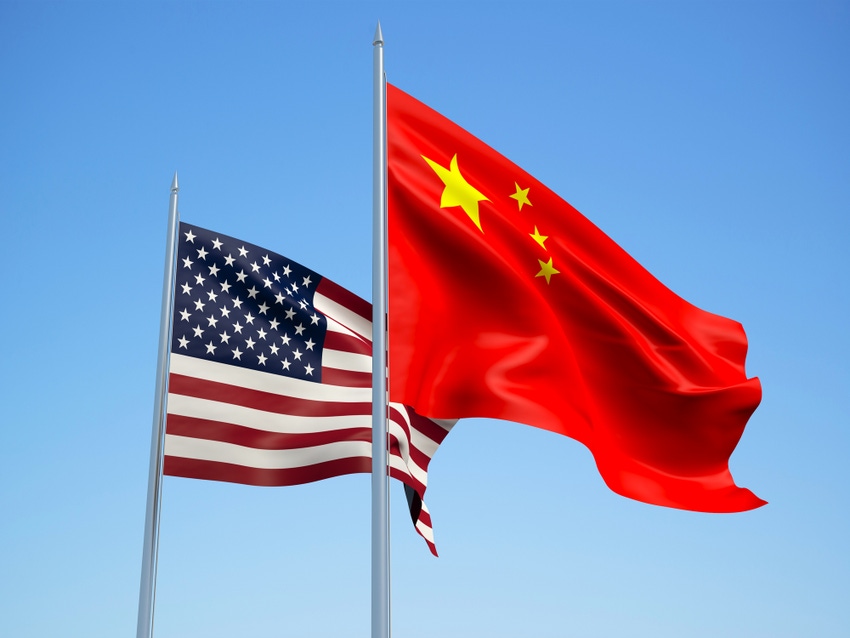
By Shawn Donnan
Chinese officials confirmed over the weekend that the U.S. and China are close to finalizing the “phase one” deal Presidents Donald Trump and Xi Jinping are expected to sign on the sidelines of a Nov. 16-17 meeting in Chile of the Asia-Pacific Economic Cooperation. So it’s a good time to review what’s in the deal — and what’s not.
What’s In:
A pause in the tariff escalation, but not an end of them. Trump agreed to forego an Oct. 15 increase to 30% from 25% in the tariffs collected on some $250 billion in imports from China. But the 25% tariffs haven’t gone away. And neither has the 15% tariff on a further $110 billion in goods that took effect Sept. 1, nor the threat that another $160 billion in goods will be hit Dec. 15. There is an expectation the Dec. 15 tariffs, which would hit popular consumer items like smartphones and toys, won’t take effect. But a lot of tariffs remain in place.
Concessions on intellectual property. From the beginning, the administration’s big target in its “Section 301” fight against China has been forcing an end to what the U.S. sees as a systematic and state-backed Chinese theft of American intellectual property. Included in the deal being finalized are commitments by China. But they are largely actions China has taken already. It passed new IP and foreign investment laws earlier this year that address the issue. It has also already set up new IP courts to prosecute cases. As always with China, the key is whether authorities enforce the laws.
Currency commitments. As members of the Group of 20 both the U.S. and China have agreed not to manipulate currency markets for economic advantage. Now they will have a bilateral commitment to do so that may lead to the U.S. removing the “currency manipulator” label it slapped on China in August.
Lots of soybeans and pork, and some other Chinese farm concessions. China has already resumed purchases of soybeans and begun buying American pork in large quantities. Trump has set doubling purchases as a goal. But the indications are that initially China will simply be buying at levels seen before the trade war started. Even that is politically convenient for both the U.S. and China. Trump wants to help an important political constituency — farmers. Meanwhile, a devastating disease has led to mass deaths of pigs in China and a surge in the price of pork that has leaders in Beijing concerned.
Other purchases, possibly commitments to buy more American commercial aircraft and natural gas.
A dispute resolution mechanism. What the U.S. once insisted would be a rigorous enforcement mechanism to make sure China lives up to its promises seems to have become a dispute mechanism much like those in most trade agreements. Just how effective it will be is unclear.
Things China has announced already, including the lifting of equity caps on foreign ownership of financial services firms.
What’s Not:
An end to China’s economic model as we know it. A draft agreement being batted around when talks broke down in May included commitments for greater transparency on China’s vast web of industrial subsidies. Also meant to be addressed was the role of state-owned enterprises and other command economy initiatives like “Made in China 2025,” Xi’s plan to rule the world in areas like artificial intelligence and electric cars. None of that is addressed in “phase one.” If anything the trade wars have actually caused China to double down on state programs to boost homegrown technologies.
Any breaks for Huawei, the Chinese telecom giant that’s been put on a U.S. blacklist that restricts its ability to work with American suppliers. White House officials have said those decisions are on a separate track.
A plan for a final peace. The Trump administration is eager to push the idea that the initial phase will be followed by others. But the expectations that will happen are low. While that peace remains at bay the reality is lots of tariffs will remain in place, leading to higher costs for businesses and consumers, and extending the uncertainty that has been a damper on the global economy all year.
Charting the Trade War
The escalation of U.S.-China tensions this year continued to leave a mark on international trade during the third quarter. While volumes in the CPB World Trade Monitor increased in August, when both countries announced new tariffs, three-month underlying momentum showed further weakness. There was a 0.5% decline from the previous period, and a 1.5% drop compared with a year earlier.
Coming Up
Nov. 1: South Korea trade balance
To contact the author of this story:
Shawn Donnan in Washington at [email protected]
To contact the editor responsible for this story:
Brendan Murray at [email protected]
Zoe Schneeweiss
© 2019 Bloomberg L.P.
About the Author(s)
You May Also Like




